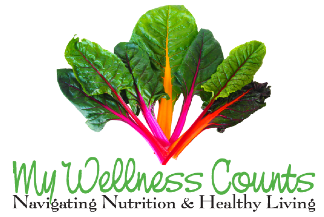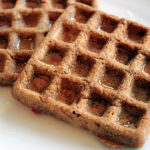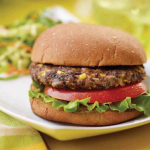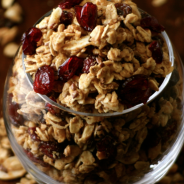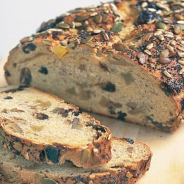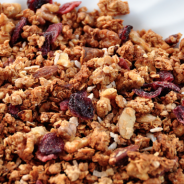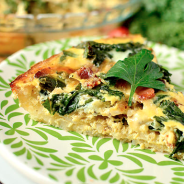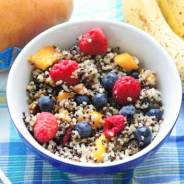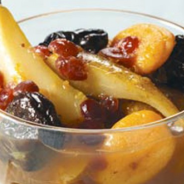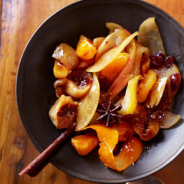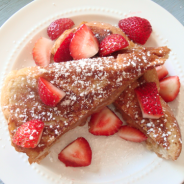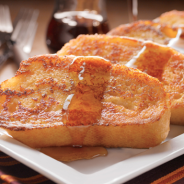Healthy Recipes
PCRM Food For Life Recipes
Certified Food For Life Cooking Instructor, Sari Dennis is also a Board Certified Health and Wellness Counselor, and Founder of My Wellness Counts, LLC. Sari works with professionalism and compassion, guiding her clients to prioritize their health by connecting sound nutrition with healthy lifestyle choices. Sari advocates the value of nutritional excellence as a path to vibrant health and happiness.
“Healthy surroundings create healthy thoughts, and healthy thoughts inspire healthy choices.”
Sari works in group-settings and one-on-one with individual clients, over the course of a 6-month period. Sari received her training at the Physicians Committee For Responsible Medicine and at the Institute for Integrative Nutrition in NYC. Sari is certified by Purchase College of the State University of New York (SUNY), and accredited through the American Association of Drugless Practitioners (AADP).
Below you will find easy ways to REPLACE your allergy-sensitive ingredients for healthy, plant-based options . . . so keep reading!
All recipes are 100% plant-based, and here are some of the many health related reasons why:
20 Quotes from the Experts
1. “Genetics loads the gun, lifestyle pulls the trigger.” – Caldwell Esselstyn, Jr., MD
2. “They say that vegetable food is not sufficiently nutritious. But chemistry proves contrary. So does physiology. So does experience…And again: the largest and strongest animals in the world are those which eat no flesh-food of any kind – the elephant and rhinoceros.” Russell Trall, MD
3. “It is the position of the American Dietetic Association that appropriately planned vegetarian diets, including total vegetarian or vegan diets are healthful, nutritionally adequate, and may provide health benefits in prevention and treatment of certain diseases.” ADA Position on Vegetarian Diets 2009
4. “Your choice of diet can influence your long term health prospects more than any other action you might take.” – Former Surgeon General C. Everett Coop
5. “You cannot buy health; you must earn it through healthy living.” – Joel Furhman, MD
6. “We have science to suggest that if you can make three changes – give up meat, all dairy, and refined foods including free oils – you can avoid dying form cancer and heart disease.” Mehmet Oz, MD
7. “People feel poorly because they are nourished by foods you wouldn’t feed to your dog or cat. The rich western diet is full of fat, sugar, cholesterol, salt, animal protein — all the wrong foods for people. Look around the world and see where people are thin and healthy — they live on a starch based diet — rice.” – John McDougall, MD
8. “Heart disease is a food-borne illness.” – Caldwell Esselstyn, Jr., MD
9. “In this diet you’re never hungry. You never have to count calories. Its like quitting smoking, you don’t eat meat for a while and it’s hard for the first day or two, but (it’s easier) after you focus on the new foods you’re eating.” – Neal Barnard, MD
10. “A plant-based diet is more likely to produce good health and to reduce sharply the risk of heart problems, cancer, diabetes, osteoporosis, gallstones, and kidney disease.” – T. Colin Campbell, PhD
11. “An important fact to remember is that all natural diets, including purely vegetarian diets without a hint of dairy products, contain amounts of calcium that are above the threshold for meeting your nutritional needs…In fact, calcium deficiency caused by an insufficient amount of calcium in the diet is not known to occur in humans.” – John McDougall, MD
12. “We should all be eating fruits and vegetables as if our lives depend on it – because they do.” – Michael Greger, MD
13. “…in switching over to a plant-based diet, most people are able to reverse their heat disease, cure type II or significantly improve type I diabetes, effortlessly reduce their weight, eliminate their chronic and nagging aches and pains.” – Alona Pulde, MD and Matthew Lederman, MD
14. “I don’t understand why asking people to eat a well-balanced vegetarian diet is considered drastic while it is medically conservative to cut people open or put them on powerful cholesterol-lowering drugs the rest of their lives.” – Dean Ornish, MD
15. “We believe that if people focus on what they’re eating and not how much they’re eating, they will have weight loss with a plant-based diet.” – Neal Barnard, MD
16. “In the next ten years, one of the things you’re bound to hear is that animal protein is one of the most toxic nutrients of all that can be considered. Quite simply the more you substitute plant foods for animal foods, the healthier you are likely to be.” – T. Colin Campbell, PhD
17. “Medicines cannot drug away the cellular defects that develop in response to improper nutrition throughout life.” – Joel Furhman, MD
18. “Poor nutrition trumps tobacco, alcohol, and sedentary lifestyles as the primary cause for the development of chronic illnesses. We cannot ignore the reality that what we eat is totally within our control, and our choices are what determine the level of risk we have of becoming ill.” – Baxter Montgomery, MD
19. “The beef industry has contributed to more American deaths than all the wars of this century, all natural disasters, and all automobile accidents combined. If beef is your idea of “real food for real people” you’d better live real close to a real good hospital.” – Neal Barnard, MD
20. “Numerous research studies have shown that cancer is more common in populations consuming diets rich in fatty foods, particularly meat, and much less common in countries with diets rich in grains, vegetables, and fruits.” – Neal Barnard, MD
Bonus: “The fat you eat, is the fat you wear.” – John McDougall, MD
Therefore: eat more plants!
Replacing Allergy-Sensitive Ingredients
The following is a rundown of what to use in place of allergenic ingredients, including gluten. These allergen-free standbys are wonderful in the kitchen.
Replacing Eggs
Eggs provide moisture, richness, binding, and leavening. You may choose from a variety of alternate ingredients throughout your recipes in place of eggs.
APPLESAUCE
Applesauce works as a binding agent, and is also a great substitute for eggs or oil/shortening, when you want to reduce the fat. 1/4 cup unsweetened applesauce = 1 egg
BANANA
Works similarly to applesauce, but has a much more distinct flavor. Only use it when you want to taste banana. 1/2 a mashed banana = 1 egg
PRUNE PUREE (AKA, baby food!)
Again, works similarly to applesauce, with a sweeter flavor. 4 1/2 to 5 ounce jar = 1 egg
VEGAN YOGURT
Vegan yogurt is great for adding moisture and binding. You may use it in place of eggs, but also in place of buttermilk, or cream. Also, coconut milk yogurt (see notes below re: coconut), and rice milk yogurt. Most people with tree nut allergies are NOT allergic to coconut, it’s an extremely rare allergy, but still, check with your allergist before consuming it. If the coconut milk is not an option for you, use the rice milk yogurt instead. 1/4 cup vegan yogurt = 1 egg
FLAXSEED MEAL
I love the effect of “flax eggs”, it works just like an egg, doing everything but leavening. It’s moist, rich, and binding. However, use “flax eggs” sparingly, as it is difficult to find totally clean flax. It’s often processed in facilities along with tree nuts or other allergens. So be sure to check with the manufacturer before consuming flax if cross contamination is a concern for you. 1 tablespoon Flax Seed Meal mixed with 3 tablespoons warm water = 1 egg
EGG REPLACER
Egg Replacer is great for leavening and binding. Ener-G Egg Replacer is manufactured in a facility free of all common allergens. 1 1/2 teaspoons Ener-G Egg Replacer mixed with 2 tablespoons rice milk or water = 1 egg
BAKING SODA & VINEGAR
This is an old baking trick from WWII when eggs were rationed. It provides leavening in place of eggs. Add the baking soda to the dry ingredients, and the vinegar to the liquid. Wait to combine the dry and liquid ingredients until the very last minute, as the chemical reaction occurs as soon as the baking soda and vinegar meet, and you must get your goodie straight into the oven! 1 teaspoon baking soda + 1 teaspoon cider vinegar (or distilled white vinegar) = 1 egg
Replacing Dairy
Replacing cow milk is pretty much a no-brainer since even our local supermarkets now sell soy milk, hemp milk, almond milk, pea milk, seed milk, rice milk, coconut milk, etc.
1 cup non-dairy milk = 1 cup cow milk
RICE MILK
Rice milk is generally made from brown rice. It is a little thinner than other nondairy milks, but still provides yummy moistness. Rice milk is commercially available just about everywhere. Be sure to read ingredients carefully, as some rice milk brands contain gluten.
HEMP MILK
Hemp milk is the most nutritious of nondairy milks, and has a rich “nutty” flavor. Look for it at Whole Foods or your local health food store.
COCONUT MILK
Traditional coconut milk is very rich. It can be used in baking, but bare in mind that it is thick and sweet. (Again, the allergy world is on the fence about coconut. Some say it’s a member of the date family, some say it’s a tree nut. Most people with tree nut allergies are not allergic to coconut, it’s an extremely rare allergy, but still, check with your allergist before consuming it).
There is also a new Coconut Milk on the shelves made by Turtle Mountain, that functions like rice milk. It’s a thinner, lower calorie coconut milk, available in the refrigerated section at Whole Foods. It’s amazing for baking and yummy in cereal!
INSTEAD OF BUTTERMILK
You can easily make your own nondairy buttermilk at home. For any 1 cup of buttermilk, add 1 tablespoon lemon juice or cider vinegar to 1 cup nondairy milk, and let stand about 10 minutes to sour.
INSTEAD OF YOGURT, CREAM & SOUR CREAM
Use coconut milk yogurt, and rice milk yogurt in place of yogurt, cream, and sour cream. The coconut milk yogurt has a better texture, and the tang of traditional dairy yogurt. If the coconut milk is not an option for you, use the rice milk yogurt instead. And if you can eat soy, then by all means, substitute soy yogurt.
INSTEAD OF BUTTER
Ah, butter, the backbone of western baking. Or is it? I’ve been delighted to find you can still make awesome “buttery” baked goods WITHOUT butter.
DAIRY-FREE, SOY-FREE VEGETABLE SHORTENING
It’s non-hydrogenated, cholesterol free, and bakes up nice and light. 1 cup dairy-free, soy-free vegetable shortening = 1 cup unsalted butter
Replacing Nuts & Nut Butters
SUNBUTTER
The past few years has seen the advent of Sunbutter. Sunbutter (aka, sunflower seed butter) is a great replacement for peanut butter and other nut butters. It is available at Trader Joes, Whole Foods, and many local health food stores. It’s also popping up on some supermarket shelves. Additionally, you can now buy safe sunflower seeds for snacking, or use in baking, though you may have to order these online.
Replacing Wheat Flours & Other Gluten Flours
This is perhaps the trickiest part of baking allergen-free. It’s not so hard to bake gluten-free if you can still use eggs, butter, and nut flours, but learning to bake without ANY of them can be a challenge.
GLUTEN-FREE, ALLERGEN-FREE FLOURS
Rice, Corn, Potato, Tapioca, Beans, Garfava, Sorghum, Quinoa, Millet, Buckwheat, Arrowroot, Amaranth, Teff, Montina, and Flax.
Whoa, that’s a lot of flours! And trickier still, most of them can’t be used on their own, they must be mixed like you’re doing AP chemistry. They can’t be swapped out cup for cup for wheat flour, and they require varying amounts of xanthan from recipe to recipe. So to make things simple for YOU, here is a Basic Gluten-free Flour Mix that you can whip up and store in your fridge:
BASIC GLUTEN-FREE FLOUR MIX (RECIPE)
Makes 6 cups
4 cups superfine brown rice flour
1 1/3 cups potato starch (not potato flour)
2/3 cup tapioca flour (also called tapioca starch)
1. To measure flour, use a large spoon to scoop flour into the measuring cup, then level it off with the back of a knife. Do NOT use the measuring cup itself to scoop your flour when measuring! It will compact the flour and you will wind up with too much for the recipe. Combine all ingredients in a gallon-size Ziploc bag. Shake until well blended. Store in refrigerator until ready to use.
A FEW WORDS ABOUT CHOICE OF FLOURS
When preparing baked goods recipes, do so with a blend of super-fine brown rice flour, potato starch, and tapioca flour. These selected flours/starches are great for gluten-free baking, and they are generally the easiest gluten-free flours for the general public to find. But most importantly, they carry the least risk of cross contamination.
Most gluten-free flours are still being processed in the same facilities as tree nut flours (such as almond flour). These ingredients can be found with the safety assurance that they are free from cross contamination with all common allergens, and which are easily found by the general public.
A FEW WORDS ABOUT EGG REPLACER
Egg replacer works best when whisked together with a liquid, using a small whisk. Be sure to beat it until slightly frothy and all the lumps have dissolved before adding it to a recipe.
A FEW WORDS ABOUT XANTHAN GUM
Xanthan Gum is the be-all and end-all of gluten-free baking. I don’t know what we would do without it. It is a plant gum that mimics gluten. It provides structure and elasticity. A little bit goes a long way, so measure it carefully. I have found there is variation between brands. I like Ener-G Xanthan Gum best. It is a derivative of corn. If you can’t eat corn, you may use guar gum instead, but please note, these recipes have not been tested with guar gum.
Maple Walnut Granola
Makes about 6 cups (12 1/2-cup servings) This yummy granola is made without added oil. 3 cups rolled oats 1 cup wheat germ 1/2 cup chopped walnuts 1/2 cup raisins 1/2 cup dried cranberries (optional) 1/4 cup sesame seeds 1/4 cup maple syrup 2 tablespoons molasses 1 teaspoon cinnamon Preheat oven to 300°F. Combine all ingredients in a large bowl and mix thoroughly. Transfer to a 9″×13″ baking dish. Bake, turning often with a spatula, until mixture is golden brown, about 25 minutes. Store in an airtight container. Per 1/2-cup serving Calories: 210 Fat: 7.4 g Saturated Fat: 1 g Calories from Fat: 31.5% Cholesterol: 0 mg Protein: 7 g Carbohydrates: 31.6 g Sugar: 10.7 g Fiber: 4.3 g Sodium: 6 mg Calcium: 38 mg Iron: 2.2 mg Vitamin C: 0.3 mg Beta Carotene: 8 mcg Vitamin E: 1.6 mg Source: Healthy Eating for Life for Children by Amy Lanou, Ph.D.; recipe by Jennifer Raymond, M.S.,...
read moreHot Whole Wheat with Dates
Makes 4 servings This satisfying porridge includes the bran and germ of the whole wheat berry in the form of bulgur. Unlike most commercial hot wheat cereals that are stripped of the grain’s natural fiber and nutrition, this wholesome porridge is a beautiful earthy brown. 3 1/2 cups water 1 cup dry bulgur 2/3 cup chopped pitted dates 1 pinch salt 1/2 teaspoon vanilla extract 1/4 teaspoon nutmeg 1/4 teaspoon ground cardamom fortified plain or vanilla soy- or rice milk (optional) Combine water, bulgur, dates, and salt in a large saucepan and bring to a boil, stirring constantly. Reduce heat, cover, and simmer, stirring occasionally until bulgur is very tender, about 20 to 30 minutes. Remove from heat and stir in vanilla, nutmeg, and cardamom. Serve plain or with soy- or rice milk, if desired. Per 1-cup serving Calories: 206 Fat: 0.6 g Saturated Fat: 0.1 g Calories from Fat: 2.8% Cholesterol: 0 mg Protein: 5.1 g Carbohydrates: 49.1 g Sugar: 19.2 g Fiber: 8.9 g Sodium: 83 mg Calcium: 27 mg Iron: 1.2 mg Vitamin C: 0.2 mg Beta Carotene: 4 mcg Vitamin E: 0 mg Source: Breaking the Food Seduction by Neal Barnard, M.D.; recipe by Jo Stepaniak; © Jo Stepaniak 2005, published by...
read moreHigh-Protein Oat Waffles
Makes 10 4″ waffles If you didn’t make these crisp, ultra-nutritious waffles yourself, you’d never guess beans were among the ingredients. Soaking the beans takes just minutes before you retire for the night, and in the morning, you can make the batter quickly in the blender. (Note: To cook waffles without added fat, you will need a good-quality non-stick waffle iron.) These waffles take a little longer to bake than ordinary waffles (about 8 minutes), so you may want to make them ahead of time. They can be reheated quickly in a toaster. Topped with chili or creamed vegetables, they make a great lunch or supper. For gluten-free waffles, substitute brown rice flakes or quinoa flakes for the oats. 1/2 cup dry cannellini, white kidney, or great Northern beans 2 1/4 cups water 1 3/4 cups old-fashioned oats 2 tablespoons sugar, or 1 tablespoon agave nectar 3/4 tablespoon whole flaxseeds 1 tablespoon baking powder 1 1/2 teaspoons vanilla extract, or 3/4 teaspoon vanilla extract and 3/4 teaspoon orange, almond, or coconut extract 1 teaspoon salt The night before: Place beans in a large bowl and cover generously with water. Refrigerate overnight or for up to a week. In the morning: Drain beans, discarding the soaking water. Place in a blender with 2 1/4 cups fresh water and oats, sugar or agave nectar, flaxseeds, baking powder, vanilla, and salt. Blend until smooth, light, and foamy. Set aside and preheat a non-stick waffle iron. Pour a generous 1/3 cup of batter onto the hot waffle iron for each 4″ waffle. Close the iron and cook for a minimum of 8 minutes. If the iron is hard to open, let the waffle cook for another minute or two. Repeat with the remaining batter, blending briefly before pouring each waffle. If the batter thickens while standing, add enough water to return it to its original consistency. The waffles should be golden brown and crisp. Serve immediately or cool completely on a rack and freeze in an airtight container. Serve with your favorite toppings. Per waffle Calories: 102 Fat: 1.3 g Saturated Fat: 0.2 g Calories from Fat: 11.5% Cholesterol: 0 mg Protein: 4.6 g Carbohydrates: 18.4 g Sugar: 2.9 g Fiber: 3 g Sodium: 384 mg Calcium: 111 mg Iron: 1.6 mg Vitamin C: 0 mg Beta Carotene: 0 mcg Vitamin E: 0.3 mg Source: Dr. Neal Barnard’s Program for Reversing Diabetes: The Scientifically Proven System for Reversing Diabetes Without Drugs by Neal D. Barnard, M.D.; recipe by Bryanna Clark...
read moreGranola au Commensal
Makes 14 servings 5 cups oats 2 tablespoons sunflower seeds 1/3 cup chopped walnuts 1/3 cup sliced almonds 2/3 cup shredded coconut 1 cup golden raisins 1/2 cup bran 1 teaspoon sesame seeds 1/3 cup sunflower oil 1/2 cup maple syrup Preheat oven to 350°F. Mix all the dry ingredients together in a large bowl. Combine and slightly heat the oil and syrup. Add the liquid mixture to the dry one and mix well with your hands. Spread the mixture on a baking sheet and bake for 15 to 20 minutes until dried and lightly toasted. Let cool, then store in a sealed container in a dark place. Enjoy with soymilk, if desired. Per serving (1/14 of recipe) Calories: 284 Fat: 12.4 g Saturated Fat: 2.6 g Calories from Fat: 39.4% Cholesterol: 0 mg Protein: 6.6 g Carbohydrates: 39.8 g Sugar: 15.3 g Fiber: 5.1 g Sodium: 15 mg Calcium: 40 mg Iron: 2.2 mg Vitamin C: 0.4 mg Beta Carotene: 2 mcg Vitamin E: 3.9 mg Source: Le Commensal, Montreal, Quebec, Canada. Published in The Best in the World, Neal D. Barnard, M.D.,...
read moreGarlic Hash Browns with Kale
Makes 2 servings 2 Yukon Gold potatoes, shredded 1/4 teaspoon salt 2 – 3 large kale leaves, shredded 6 garlic cloves, minced non-stick cooking spray 1/2 teaspoon freshly ground black pepper Rinse the shredded potatoes and pat them dry. Mince the garlic. Spray a skillet with nonstick cooking spray. Over medium-high heat, sauté the potatoes with the salt until the potatoes are crisp. Once the potatoes are done, add the kale and garlic to the pan and continue sautéing everything for about 2 more minutes. Remove from the heat. Add the pepper. Options: Substitute 2 cups of shredded sweet potato for the shredded Yukon gold potatoes. Per serving Calories: 450 Fat: 1 g Saturated Fat: 0 g Calories from Fat: 2% Cholesterol: 0 mg Protein: 10 g Carbohydrates: 102 g Sugar: 2 g Fiber: 7 g Sodium: 366 mg Calcium: 0 mg Iron: 0 mg Vitamin C: 0 mg Beta Carotene: 0 mcg Vitamin E: 0 mg Source: Recipe from 21-Day Weight Loss Kickstart by Neal Barnard, M.D.; Recipe by Jason Wyrick of Vegan Culinary...
read moreFruited Breakfast Quinoa
Makes about 6 1/2-cup servings Quinoa is a highly nutritious grain that was a staple in the diet of the ancient Incas. It has a delicious flavor and a light, fluffy texture. 1/2 cup dry quinoa, well-rinsed 1 1/2 cups vanilla rice milk 2 tablespoons raisins 1 cup chopped fresh or canned apricots 1/4 teaspoon vanilla extract Combine quinoa and rice milk in a medium saucepan. Bring to a slow simmer, then cover and cook for about 15 minutes until the quinoa is tender. Stir in raisins, apricots, and vanilla, then transfer about 1 1/2 cups to a blender and purée. Return puréed mixture to the pan and stir to mix. Serve warm or chilled. Per 1/2-cup serving Calories: 106 Fat: 1.4 g Saturated Fat: 0.1 g Calories from Fat: 12.3% Cholesterol: 0 mg Protein: 2.4 g Carbohydrates: 21.4 g Sugar: 8.3 g Fiber: 1.5 g Sodium: 26 mg Calcium: 90 mg Iron: 1.5 mg Vitamin C: 3.1 mg Beta Carotene: 302 mcg Vitamin E: 0.9 mg Source: Foods That Fight Pain by Neal Barnard, M.D.; recipe by Jennifer Raymond, M.S.,...
read moreFresh Fruit Compote 2
Makes 4 servings This delicious mixture of stewed, fresh, and dried fruit makes any morning sweet and special. Top each serving with a little vanilla soy- or rice milk, soy yogurt, finely chopped raw nuts or seeds, or a pinch of dried, unsweetened coconut for a real treat. 1 Granny Smith apple, peeled and chunked 1 pear, peeled and chunked 1 cup water 1/4 cup chopped dates, figs, or raisins 1/2 teaspoon cinnamon Combine all ingredients in a medium saucepan and bring to a boil. Simmer, stirring occasionally, until fruit is tender but not mushy. Serve hot, warm, or chilled. Tip: • If the compote gets too sweet, add 2 to 3 teaspoons fresh lemon juice to balance the flavor. Per 1/2-cup serving Calories: 72 Fat: 0.1 g Saturated Fat: 0 g Calories from Fat: 1.8% Cholesterol: 0 mg Protein: 0.5 g Carbohydrates: 19.1 g Sugar: 14.4 g Fiber: 2.8 g Sodium: 2 mg Calcium: 14 mg Iron: 0.3 mg Vitamin C: 3.2 mg Beta Carotene: 12 mcg Vitamin E: 0.1 mg Source: Breaking the Food Seduction by Neal Barnard, M.D.; recipe by Jo Stepaniak; © Jo Stepaniak 2005, published by...
read moreFresh Fruit Compote
Makes 6 1/2-cup servings Enjoy this compote with Quick and Easy Brown Bread. 2 fresh peaches or nectarines 2 cups fresh blueberries 1/2 cup white grape juice concentrate or apple juice concentrate Rinse fruit. Peel peaches or nectarines if desired, then slice. Combine fruit in a saucepan with juice concentrate. Bring to a simmer and cook until fruit just becomes soft, about 5 minutes. Serve warm or cold. Per 1/2-cup serving Calories: 83 Fat: 0.3 g Saturated Fat: 0 g Calories from Fat: 3.4% Cholesterol: 0 mg Protein: 0.8 g Carbohydrates: 20.8 g Sugar: 18.1 g Fiber: 1.7 g Sodium: 2 mg Calcium: 8 mg Iron: 0.3 mg Vitamin C: 26.8 mg Beta Carotene: 72 mcg Vitamin E: 0.5 mg Source: Healthy Eating for Life to Prevent and Treat Diabetes by Patricia Bertron, R.D.; recipe by Jennifer Raymond, M.S.,...
read moreFrench Toast 3
Makes 4 to 6 slices 1/2 cup soy- or rice milk 3 tablespoons arrowroot 1 teaspoon vanilla extract 1/4 teaspoon cinnamon 4 – 6 slices rice bread In a medium bowl whisk together non-dairy milk, arrowroot, vanilla, and cinnamon. Pour batter into a flat container and dip the bread into the batter, turning it to coat both sides. Heat a non-stick griddle or large skillet, then lightly coat it with vegetable oil spray. Cook each side of the coated slices over medium-high heat for 2 to 3 minutes, or until golden brown. Serve with fresh fruit, fruit preserves, or syrup. Per slice (without topping) Calories: 100 Fat: 1.6 g Saturated Fat: 0.2 g Calories from Fat: 14.5% Cholesterol: 0 mg Protein: 3.6 g Carbohydrates: 17.9 g Sugar: 2.2 g Fiber: 1.7 g Sodium: 120 mg Calcium: 49 mg Iron: 1.1 mg Vitamin C: 0.1 mg Beta Carotene: 4 mcg Vitamin E: 0.5 mg Source: Foods That Fight Pain by Neal Barnard, M.D.; recipe by Jennifer Raymond, M.S.,...
read moreFrench Toast 2
Makes 8 slices 1 cup firm tofu 1 cup soymilk 2 tablespoons flour 2 tablespoons maple syrup 1 teaspoon vanilla extract 1/8 teaspoon cinnamon 1/8 teaspoon salt 8 slices whole-wheat bread 1 vegetable oil spray In a blender, process tofu, soymilk, flour, syrup, vanilla, cinnamon, and salt until very smooth. Pour into a flat, shallow dish and soak bread slices 1 minute on each side. Transfer carefully to a vegetable oil sprayed skillet. Cook first side until lightly browned, about 3 minutes, then trun and cook second side until browned. Per slice Calories: 143 Fat: 3.8 g Saturated Fat: 0.6 g Calories from Fat: 24.1% Cholesterol: 0 mg Protein: 7.8 g Carbohydrates: 21.2 g Sugar: 6.8 g Fiber: 2.4 g Sodium: 209 mg Calcium: 125 mg Iron: 2 mg Vitamin C: 0.2 mg Beta Carotene: 1 mcg Vitamin E: 0.7 mg Source: Food for Life by Neal Barnard, M.D.; recipe by Jennifer Raymond, M.S.,...
read more